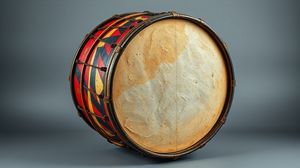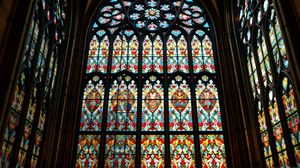
Standing majestically outside St Paul's Cathedral, the Queen Anne Statue serves as a regal reminder of British history. Erected in 1712, it commemorates Queen Anne, the last of the Stuart monarchs, who ruled Great Britain from 1702 until 1714. The statue was originally created to celebrate the completion of St Paul's Cathedral by Sir Christopher Wren.
Interestingly, the statue you see today is a replica; the original suffered from severe weather damage over the centuries. Completed in 1886, this replacement was the work of sculptor Richard Claude Belt, embodying the enduring legacy of the monarch whilst ensuring the longevity of its presence at this historic site.
Queen Anne is depicted holding the symbols of her reign – the orb and sceptre – while she gazes sternly at the bustling streets of London. The four female figures surrounding the pedestal represent Britannia, France, Ireland, and North America, once territories under her rule. These allegorical figures add an international dimension to the statue's narrative.
Located at the east end of St Paul's Churchyard, the statue has witnessed the transformation of London over more than three centuries. It remains a popular spot for both tourists and locals, offering a unique blend of history and artistry against the backdrop of one of London's most iconic landmarks.
A quirky fact about the statue is that it was once protected by railings, but these were eventually removed. During World War II, the statue's stone base was damaged by shrapnel, but this historical scar adds to the depth of stories that the monument silently tells.

Making the Most of Your Visit:
Get up close to the statue and take a moment to appreciate the expressions of Queen Anne and the surrounding allegorical figures. You'll notice the attention to detail that Richard Claude Belt put into the sculpture, giving life to these historical symbols.
If you're interested in the history of architecture, take the time to understand why the statue is located where it is. Originally symbolic of the link between the completed St Paul's Cathedral and Queen Anne, its placement still carries historical weight.
Look for the shrapnel damage on the stone base from World War II. It's a small but poignant reminder of the resilience of London through turbulent times and adds to the stories the statue has to tell.
Visit in the morning when the light hits the statue from the east. This lighting can create dramatic shadows, enhancing the depth of features and providing excellent photo opportunities with St Paul's Cathedral as your backdrop.
Don't miss out on the symbolism of the four female figures at the statue's base. Exploring their positions and understanding what each represents can give you a deeper insight into Britain's historical narrative and colonial past during Queen Anne's era.

Visiting Times & Costs:
The Queen Anne Statue is open to the public all year round as it is located outdoors on the east end of St Paul's Churchyard. It is freely accessible at all times, making it an ideal stop for both early morning visitors and those enjoying a late evening stroll. Since there is no entrance fee, anyone can appreciate the statue without any cost.
Access:
- The site is accessible by foot, and while the grounds are generally level, visitors with mobility concerns should be aware that the area immediately surrounding the statue might have some uneven surfaces.
- There are no specific barriers or restricted hours for visiting the statue, ensuring that it is continually open to those interested in its historical and artistic significance.
Overall, the Queen Anne Statue provides an enriching historical experience against the stunning backdrop of St Paul's Cathedral without any accessibility restrictions or fees.

Address & Map:

Nearby:























